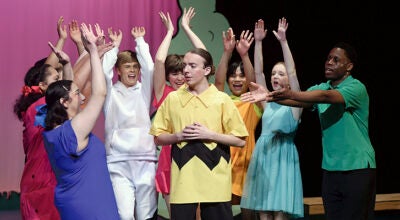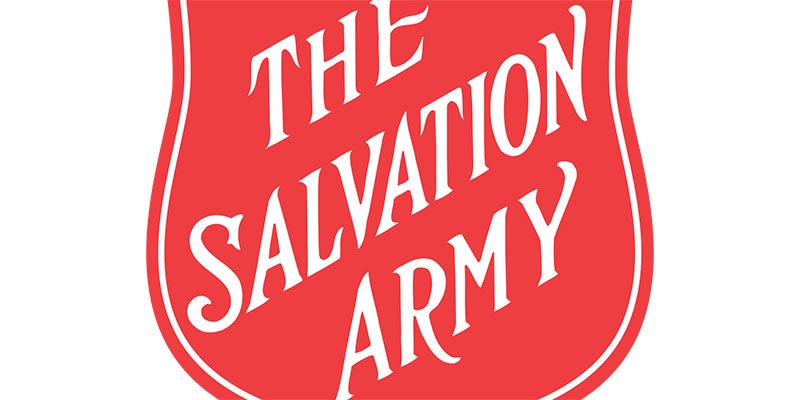The story of Red
Published 7:12 am Tuesday, April 13, 2010
No one knows for sure the aversion Red, the Jay C. Hormel Nature Center’s red-tailed hawk has toward females. No more than the Red’s primary caretaker Julie Champlin can explain why she is the exception.
What Champlin and anybody who has visited the nature center and seen Red do know though is the hawk’s lasting impact after 30 years.
“The coolest thing is how he’s been an ambassador for the species,” Champlin said Friday. “Over 500,000 have been touched by this bird.”
That’s a big number of visitors, and it’s a number Champlin quickly amended. “It’s probably closer to 750,000.”
By law, because Red is an educational bird, Champlin has to show the state of Minnesota and Federal government numbers of how many people see Red. The above numbers factor in those who visit the nature center and students who have seen him through the nature center’s education curriculum.
There really is no doubt that Red’s value to the center as an education bird has had an impact, not only for those who are a part of his presentations, but for Champlin herself who was introduced to Red in 1984.
“He’s been an excellent education tool,” Champlin said. “People are enamored with him to get that close.”
Red came to the nature center after a family found in him abandoned in the nest. After trying to raise him, the family gave it over to Vince Shay, former director of the nature center, after they learned it was illegal to have the hawk in captivity.
Champlin was touched immediately by the bird, perhaps in no small amount because Red allows Champlin to handle and take care of him when any other female; adult or child, risks being bit or even swooped down on.
While it’s foggy as to why Red doesn’t like other females, it’s believed that when Red was first rescued he might have been taunted by a female child.
Since then, Red has come to live a good and long life at the nature center under Champlin’s care, but while Red is known and loved and the story is mostly happy, there is now a sad part of this story.
Recently, Red celebrated his 30th birthday, a birthday many thought he wouldn’t make. It was a happy occasion, but one with a shadow because Red most likely won’t make 31.
Champlin isn’t fatalistic about Red, who she said, “He’s almost like a third child for me. He’s really opened my eyes up to enjoying all birds of prey.”
Instead she’s realistic. He suffers from both liver and heart disease which has progressed past the point of being able to treat.
The hawk has been a fighter though and enjoyed more than perhaps his fair share of luck. Having been raised by humans, Red lacks the ability to fend for himself, yet he survived a brief foray into the wild for three weeks. His weight dropped to dangerous levels, and he lost a couple talons because of frostbite.
But Red fought back and continued on until the nature center almost lost him again — twice — last June.
Around that time Champlin noticed Red wasn’t eating. He would kill the mice he was normally given, but wouldn’t eat them. The lack of eating dropped his weight well below the 900 grams that is normal for red-tailed hawks.
On June 16, Red was taken to the Raptor Center at the University of Minnesota, St. Paul campus where he was diagnosed. He was treated and the treatment bought Red what physicians thought might be about three more months. Despite only being able to treat Red for 14 days with the medications he was prescribed, Red continued to live.
Little did Champlin know at the time though that Red’s emergency trip to St. Paul may have saved him a second time in as many days. The next day, June 17, a tornado cleaved through the nature center, damaging the side of the pen Red shared with the center’s barred owl, Guka. The damage included a canoe through the door.
“He could have been injured,” Champlin said, adding that it’s possible Red could have suffered a heart attack because of the shock.
And as Red progressed, he continued to teach and continued to live and in December of 2009, Champlin emailed the doctor who saw Red to let her know Red was still hanging on.
“She said, ‘he’s a tough old bird,’” Champlin said. “I like that. He is a tough old bird.”
Since then though Red’s life has changed. He no longer can be kept outside. Even the moderate fluctuations of temperatures in the summer can be dangerous. Champlin and executive director Larry Dolphin modified a room in the basement of the interpretive building for Red where to this day Red’s instinct to make a nest is helped along with branches provided by nature center staff.
So it comes back to realism. Champlin knows that Red’s life now can be measured in months, weeks, or even days. After all, Red has lived about double the life-span of a red-tailed hawk in the wild which is 15-18 years, and he continues to fight with the diseases.
“Every day I leave and I make sure there’s a saying, ‘I hope you’re here the next day.,’” Champlin said.
When the day comes that Red no longer eats or no longer can roost then the end will have come. There is nothing more medically that can be done for Red.
On that day Champlin and Dolphin will take Red out one last time.
“We’ll both go out and take him for a long walk, show him his territory one more time,” Champlin said. “A final walk in nature with him.”
Red’s impact won’t end on that day. There’s really no way it can with as long as the hawk has been part of the nature center.
“We’ll never replace Red,” Champlin said, a smile growing. “He’s had a real calming effect for me. Just to spend time with him is calming. He’s a good listener.”





